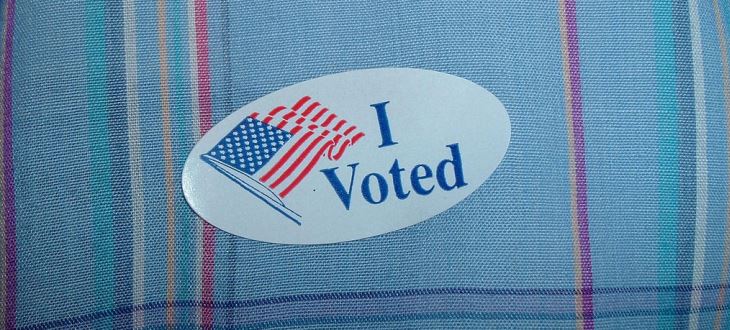The State We're In
Encourage environmental voters!
People who consider themselves environmentalists often recycle, use energy-efficient light bulbs and appliances, eat local and organic foods, and compost. They often like to get their power from clean sources like solar and wind, and may walk or bike to work to avoid car trips.
But, apparently, many don’t vote!
According to the Environmental Voter Project, a nonprofit based in Boston, many folks whose top concerns are climate change and the environment often don’t show up at the polls.
This is a problem, says Environmental Voter Project founder Nathaniel Stinnett, because those in power pay attention to people who vote regularly – not those who sit out Election Day. Political campaigners know who votes and who doesn’t vote, he noted, and only spend time and energy on the proven voters.
If it seems like climate change and environmental issues are ignored in political campaigns, this could be one reason.
“All these environmentalists who are saying, ‘oh, politicians don’t care about me’ … well, they’re absolutely right,” said Stinnett in a recent interview with the Living On Earth public radio program. “If you have a public record of not voting, why on Earth would a politician care about you?”
The Environmental Voter Project aims to fix this problem by identifying environmentalists – defined as those who list climate change and the environment as top political priorities – and converting them into steady voters.
The theory is: if environmentalists vote regularly, they’ll show up in polls of likely voters. Politicians will be forced to pay more attention to the environment and climate change, and those issues will become priorities in political campaigns.
While environmentalists are often thought of as being white, middle-aged yuppies, the Environmental Voter Project tells a different story.
According to Stinnett, the people likely to care most about the environment tend to be either young, urban, African American, Latino or lower income. He calls these groups “the new face of the environmental movement,” because they disproportionately feel the impacts of climate change and environmental pollution.
Statistically, though, these groups vote less often than the overall American population. That’s where the Environmental Voter Project comes in.
The Project uses a combination of consumer and demographic data and public records to target potential environmentalists who aren’t regular voters. Those identified are asked to sign a written pledge to vote; they’ll receive reminders of the pledge before elections. The Environmental Voter Project also registers new voters.
The Environmental Voter Project is non-partisan and doesn’t try to tell anyone how to vote. Its website contains no information about climate change or other environmental issues, and endorses no candidates.
The Environmental Voter Project started in Massachusetts in 2015 and has spread to Pennsylvania, Georgia, Colorado, Florida and Nevada.
Based on the midterm elections this past November, the voting patterns of environmentalists may already be changing … or their ranks may be growing.
Exit polls in the 2018 midterms found that 7 to 9 percent of voters listed climate change or the environment as the top issue facing the country. Although this may not sound like a lot, Stinnett notes that it’s three or four times the percentage identified by exit polls in previous elections. In 2014 and 2016, only about 2 percent of voters listed the environment as their priority issue.
An estimated 116 million people voted in the 2018 midterm elections, meaning over eight million voters may now consider the environment the most important issue.
If you care about the environment and want to see more attention paid to climate change, be sure to vote in local, state and national elections. And if you know of any non-voting environmentalists, encourage them to get out and vote! Voters drive public policy! If the Environmental Voting Project is correct, there’s a huge, silent constituency that could make a big difference in the world.
To learn more about the Environmental Voter Project, go to www.environmentalvoter.org/.
To hear Stinnett’s interview on the Living On Earth public radio show, go to www.loe.org/shows/segments.html?programID=18-P13-00049&segmentID=3.
And for more information about preserving New Jersey’s land and natural resources, visit the New Jersey Conservation Foundation website at www.njconservation.org or contact me at info@njconservation.org.
About the Authors
Alison Mitchell
Co-Executive Director
John S. Watson, Jr.
Co-Executive Director
Tom Gilbert
Co-Executive Director, 2022-2023
Michele S. Byers
Executive Director, 1999-2021
View their full bios here.
Filter
Get The Latest News
From The Garden State
In the
News

